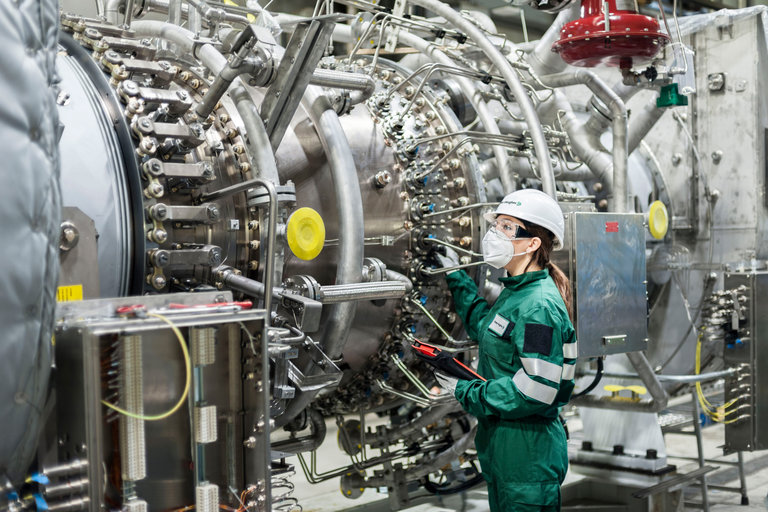Baker Hughes has announced several developments to support the growth of the hydrogen economy. It has unveiled a new hydrogen testing facility for the validation of its industrial turbines, in order to run blends all the way up to 100% hydrogen. It has also completed manufacturing and testing of its hydrogen turbines for Air Products’ Net-Zero Hydrogen Energy Complex in Edmonton, Canada. In addition, the company has executed a collaboration agreement with HyET and has signed a memorandum of understanding with Green Energy Park.
Masdar and CMA CGM have signed a strategic supply partnership (SSP) for long-term green maritime fuels offtake contracts to supply CMA CGM vessels. “The aim of the partnership is to source, supply and deliver green alternative fuels for CMA CGM’s dual-fuel vessels, in the port of Abu Dhabi, starting in 2025 and following the incremental phase-in of the vessels until 2028,” said Abu Dhabi-based Masdar. “[We] will also continue to discuss extending their collaboration opportunities, potentially on green hydrogen and ammonia production.”
Air Liquide and TotalEnergies have set up the equally owned TEAL Mobility, which “will accelerate the development of hydrogen for heavy-duty trucks by offering a network of 100 stations on major European corridors.” The two French companies said that TEAL Mobility will operate around 20 facilities in France, the Netherlands, Belgium, Luxemburg and Germany from 2024.
Plug Power has started operating the largest liquid green hydrogen plant in the US market.“This is the largest electrolytic liquid hydrogen production plant, and largest PEM electrolyzer deployment operating in the US, representing a landmark achievement in Plug’s build-out of a vertically integrated hydrogen ecosystem,” said the US company. The plant in Woodbine, Georgia, is designed to produce 15 tons per day (TPD) of liquid electrolytic hydrogen via eight 5 MW proton exchange membrane electrolysis (PEM) electrolyzers. The hydrogen gas is then condensed into liquid form at -423 F (-252.8 C) to be delivered to customers’ hydrogen fueling stations through Plug Power’s logistics network using its cryogenic trailers.
Hydrogen Compass said that a total of 25 countries and regions want to export hydrogen. In contrast, nine countries and regions are focusing on hydrogen imports, including several European countries, as well as Japan and Singapore. Hydrogen Compass is a project by acatech and Dechema. “The European countries and regions alone are planning to build 52 gigawatts of production capacity – significantly more than assumed by the Europe 2020 strategy,” said the report. Apart from Europe, also Chile (25 GW) and India (25 GW to 60 GW) have set high targets. Overall, the capacity targets of the 25 strategy papers, which contain quantitative information, add up to between 108 GW and 151 GW. The report also underlines that the countries’ hydrogen strategies report a wide range of hydrogen prices, from €0.60 ($0.65) per kilogram in India to €4.50 per kilogram in South Korea).
This content is protected by copyright and may not be reused. If you want to cooperate with us and would like to reuse some of our content, please contact: editors@pv-magazine.com.



4 comments
By submitting this form you agree to pv magazine using your data for the purposes of publishing your comment.
Your personal data will only be disclosed or otherwise transmitted to third parties for the purposes of spam filtering or if this is necessary for technical maintenance of the website. Any other transfer to third parties will not take place unless this is justified on the basis of applicable data protection regulations or if pv magazine is legally obliged to do so.
You may revoke this consent at any time with effect for the future, in which case your personal data will be deleted immediately. Otherwise, your data will be deleted if pv magazine has processed your request or the purpose of data storage is fulfilled.
Further information on data privacy can be found in our Data Protection Policy.